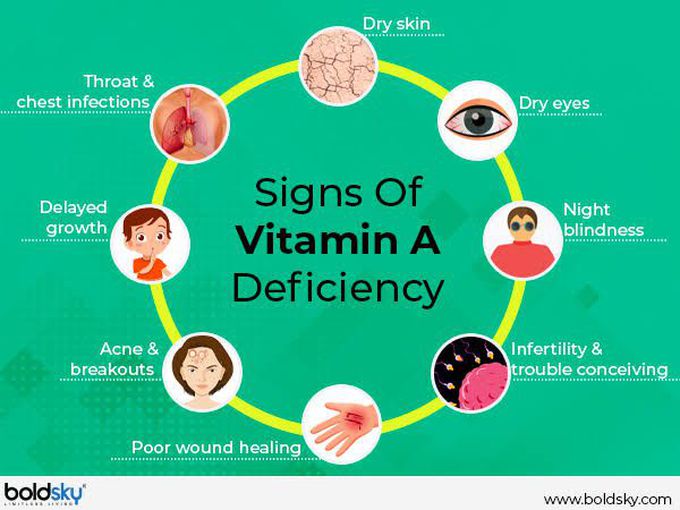


Vitamin A deficiency
Vitamin A is a fat-soluble vitamin essential in cell development, metabolism, immune competency, vision, and reproductive functions.Vitamin A deficiency (VAD) is a highly prevalent health concern associated with substantial morbidity and mortality, mostly affecting young children in impoverished regions throughout the world. Insufficient intake of absorption leads to deficiency and compromise of essential physiologic processes. Natural sources of vitamin A include dark leafy greens, orange-colored vegetables, milk products, liver, and fish.It is absorbed in the duodenum after hydrolyzation by pancreatic and intestinal enzymes and emulsified with dietary fats and bile acids.The majority is then stored in the hepatic stellate cells.Significant amounts are also stored in adipose tissue and the pancreas. The recommended dietary allowance (RDA) of vitamin A by the Institute of Medicine in healthy adults is 700 micrograms/day for women and 900 micrograms/day for men.For children, pregnant women, and lactating women, the RDA is 300 to 900, 770, and 1300 micrograms/day respectively. The minimum requirement to prevent symptomatic VAD in children 1 to 5 years of age is about 200 micrograms/day. Serum retinol levels are a good marker of vitamin A nutritional status. Deficiency is defined as a retinol concentration of fewer than 20 micrograms/dL. Vitamin A deficiency-associated ocular symptoms have been shown to develop at concentrations less than 10 micrograms/dL.Dietary vitamin A is ingested as either carotenoid from fruits and vegetables or retinoid from animal products. Carotenoids are a provitamin A, most commonly beta-carotene, and retinoids are active forms of vitamin A, such as retinol and retinyl esters. Retinoids have been shown to have 75% to 100% absorption, whereas carotenoid absorption varies greatly depending on the food matrix and type of carotenoid. A 12 to 1 ratio of beta-carotene to retinol absorption in a diet of mixed fruits and vegetables is the estimated conversion used by the Centers for Disease Control and Prevention. Many populations in developing countries rarely ingest meat, dairy, or carotenoid-rich vegetables leading to difficulty obtaining sufficient quantities of vitamin A.

